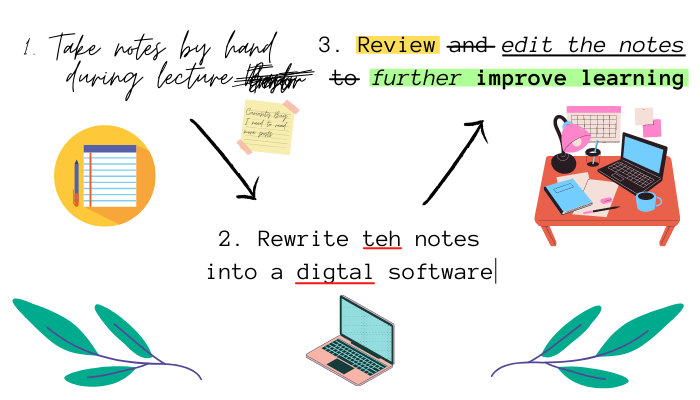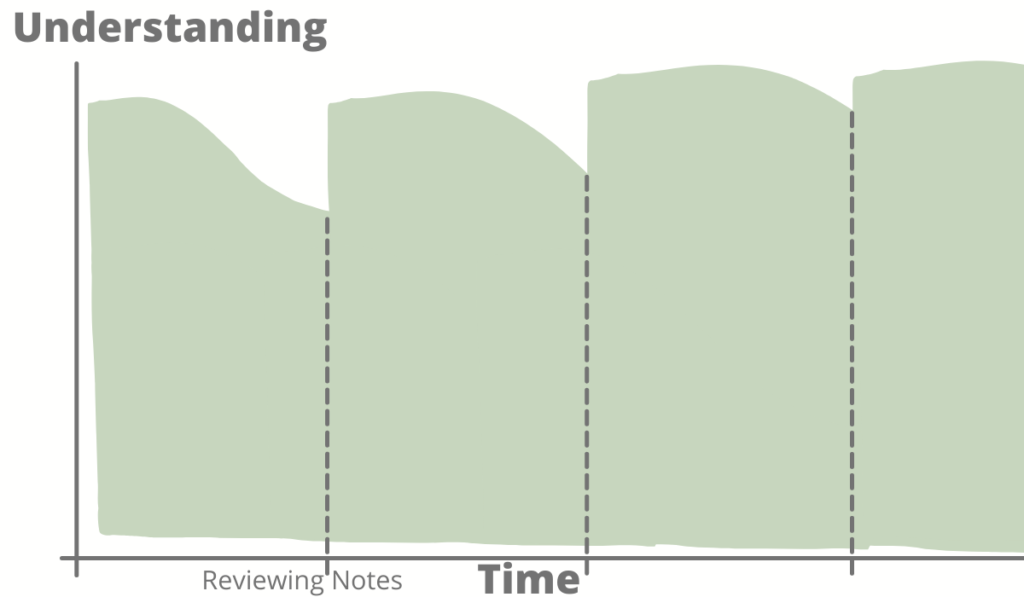The Most Efficient Ways to Take Notes for Online Courses
It is sometimes hard to take notes in real-time during a lecture, and maybe even more so during a video lecture. Most likely because you have to use your computer to access the content. In most cases, this forces you to take notes by hand on paper. But this can get messy if you do not have an organized system in place.
How to take notes for online courses effectively varies from person to person, but a good combination of the best practices is to initially take physical notes with pen and paper and then to rewrite and edit them into a digital app. This might sound strange but keep reading for the full explanation.

Why do we need to take notes?
The short answer is that taking notes of what we watch or read in courses helps us remember the information for longer. If you just watch a lecture without taking any notes, you will probably only remember parts of it for the rest of the day. And maybe you would remember some short parts of it for the rest of the week. But without repetition or engagement with the information, it will soon be a wasted hour, of which you remember nothing.
How do we learn?
We learn when our brain has to correct errors in our behavior or thinking in order to achieve the desired result. This can be achieved when you are editing your notes. When you take notes during the lecture you are only writing down what is being said at the moment. And you only have the information of what has been said so far during the lecture as a reference. When you come back later and rewrite the notes into your digital app, it forces you to “edit” your previous thinking.
How to take notes
Everyone is different, and everyone has different preferences. If you have a system that works for you, great. However, let me make the case of my note-taking system. A system that is tied to the fundamentals of how our brain learns.
During the lecture, I take fast and sometimes sloppy notes with pen and paper. This is mainly because I need my entire screen for the video lecture and perhaps an accompanying comment section. Later during the day, I rewrite my notes into digital software like Notion, OneNote (which I use), or a Google Docs document.
This allows me to correct, edit and add information to my notes. Since they are digital, I am also able to add screenshots or write out ideas and questions more freely. I can also easily fill in missing information between notes.
To conclude, your notes should be a living document, which you will return frequently to.
The Feynman Method
A good way to increase your learning is by taking notes in such a way like you are describing them to someone else. This is called the Feynman method. When you put yourself in the position of someone who explains a topic, you force yourself to also explore eventual questions you might get.
This way of putting yourself in the position of a lecturer is not only useful for taking helpful notes but to increase your learning for most of the things you do in life.
Collaborate with friends.
Participate and make errors and receive feedback. There are many studies that show working with peers increases the learning rate. Whether it is by you explaining concepts to someone or getting immediate feedback and answers to questions you have, without having to wait for a response from the teacher.
Many note-taking apps offer the possibility of sharing documents that can then be edited by several different people.
Add images and comments to notes
There are many benefits to adding images to your notes. It can make them easier to digest and navigate, and a picture says a thousand words. We also have an easier time learning via visual cues, and we can use this in our note-taking to hack into our biology. Want to memorize something, add images and connect them to the acronyms or words that sound like the pictured object.
Why and how you should revisit your notes
The notes should form a cohesive information bundle at the end of the course which you will be able to use much more effective to study for any eventual finals and/or for long-term learning and repetition. This is because the course content now is written by you in your own words. And you have utilized the techniques of writing like you are explaining the concepts, which you are, to yourself.

Repetition is a fundament for long-term learning. I wrote an article about it here, so I won’t go in too deep on the topic in this article. But to summarize, repetition of what we have learned is crucial for long-term learning and understanding. If you just take notes during a lecture and never look at them again, you will probably forget most of that lecture when finals come. But there are significant increases in memory if you re-read your notes during the evening the very same day.
Summary of how and why we take notes during lectures:
- What we have learned is that we need to take notes in the first place to enable long-term learning.
- Taking notes initially by hand allows for a better learning
- Rewriting those physical notes into a digital app makes us interact with them and in so doing correcting errors and misconceptions.
- Now that they are available digitally, we can rearrange them and review and edit them over the entirety of the course as we learn more, and beyond.

